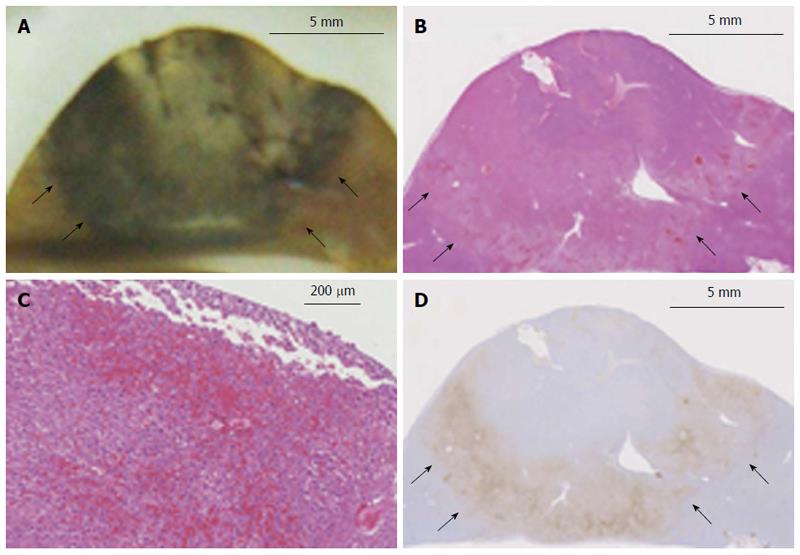Copyright
©2014 Baishideng Publishing Group Inc.
World J Gastroenterol. Sep 7, 2014; 20(33): 11850-11855
Published online Sep 7, 2014. doi: 10.3748/wjg.v20.i33.11850
Published online Sep 7, 2014. doi: 10.3748/wjg.v20.i33.11850
Figure 4 Histopathological findings of a thermal lesion.
A: Gross pathological examination of a radiofrequency (RF)-ablated liver shows a core area of white coagulation and a surrounding dark rim of hemorrhagic tissue (arrows). Scale bar: 5 mm; B, C: H-E staining of an RF-ablated liver shows a hemorrhagic rim surrounding the ablated area (arrows), with sinusoidal dilatation and congestion associated with cellular dissociation. Scale bar in (B): 5 mm, and in (C): 200 μm; D: Hsp70 staining of the hemorrhagic rim in (B) shows a clearly demarcated band of Hsp70 expression (arrows), which is suggestive of the presence of thermally damaged cells within the rim. Scale bar: 5 mm.
- Citation: Sugimoto K, Oshiro H, Ogawa S, Honjo M, Hara T, Moriyasu F. Radiologic-pathologic correlation of three-dimensional shear-wave elastographic findings in assessing the liver ablation volume after radiofrequency ablation. World J Gastroenterol 2014; 20(33): 11850-11855
- URL: https://www.wjgnet.com/1007-9327/full/v20/i33/11850.htm
- DOI: https://dx.doi.org/10.3748/wjg.v20.i33.11850









